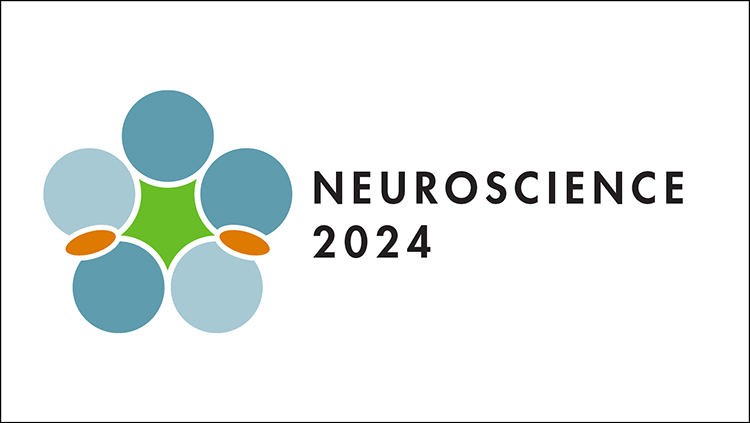Inside Neuroscience: The Adolescent Brain, Stress, Depression, and the Pandemic
Teenagers may sometimes feel invincible, but they are uniquely vulnerable to stress and other factors in their environment. And many adolescents are suffering.
Teen mental health has been declining for years, a trend accelerated by the pandemic. U.S. Surgeon General Vivek Murthy has called the youth mental health crisis “ the defining public health issue of our time.”
Neuroscientists are paying attention. At a Neuroscience 2023 press conference, scientists presented their findings on the relationship between adolescent stress, mood disorders, and brain imaging data. They also showed how the pandemic altered youth brain organization and structure.

Elizabeth Powell
“Adolescents respond differently to different stresses, environment, experiences, and other factors,” said Elizabeth Powell, a program director at the National Institute on Alcohol Abuse and Alcoholism. “This is a very dynamic period.”
Powell moderated the press conference, titled “Understanding the Stressed, Depressed, Adolescent Brain.”
The Pandemic and Premature Brain Aging
Adolescence generally spans from about age 10 to the mid-20s. And while the brain reaches its adult size early during this period, the maturation process continues for years.

Patricia Kuhl
The pandemic sped up this maturation process, reported University of Washington (UW) researcher Patricia Kuhl.
“Our findings indicate that the teenage brain showed accelerated aging due to the pandemic lockdown,” said Kuhl, who is a professor of Speech & Hearing and a co-director of UW’s Institute for Learning & Brain Sciences.
Kuhl’s study focused on a key process during adolescent brain maturation — the thinning of the cortex, the outer portion of the brain. Cortical thinning occurs along with pruning of the connections between neurons and can affect the plasticity of the brain, she added. Thinning is also associated with chronic stress.
Kuhl and her colleagues created a model of normal cortical thickness change, using MRI data from part of a larger, ongoing study of 163 adolescents. They compared the model to thickness changes observed in the study during the pandemic years.
Kuhl reported that cortical thinning was accelerated in adolescents during the pandemic, particularly in girls. In girls, the average 14-year-old brain after the pandemic showed the cortical thickness of a 16-year-old — a two-year acceleration in brain aging. In addition, thinning was widespread throughout multiple brain regions.
Boys were not as dramatically affected. Accelerated thinning was not as pronounced and occurred mainly only in the visual cortex.
Kuhl and her colleagues are still crunching the data to help them understand what factors contributed to the accelerated brain aging, and why girls were more affected. They will look at a variety of social, emotional, and cognitive factors, including time on social media.
Other studies have found that the pandemic resulted in learning loss and increases in adolescent anxiety, depression, and stress, particularly in girls, said Kuhl. “Teens were glued to their screens, both to try and learn and to have a social life and connect with their friends,” she added.
Predicting Mental Health Responses

Caterina Stamoulis
In another study, Caterina Stamoulis and her colleagues asked if the organization of the brain pre-pandemic could predict mental health status during the pandemic.
The researchers used data from the Adolescent Brain Cognitive Development (ABCD) study. This massive longitudinal study tracks brain development, health, and other factors in thousands of children at 21 sites across the U.S.
Using mathematical techniques, the researchers extracted information from fMRI imaging data from almost 1,500 youth in the study. They assessed the strength of connections between brain regions and their resilience, or ease of disruption.
They found that weaker and less resilient connections between brain regions pre-pandemic predicted higher stress and sadness during the pandemic. The effect was seen in several brain regions and was most pronounced in a region that undergoes major changes during adolescence, the prefrontal cortex.
Developing, fast-changing brain circuits are vulnerable to negative experiences that could “change their wiring in profound and long-lasting ways,” said Stamoulis, a principal investigator of the Computational Neuroscience Laboratory at Boston Children’s Hospital and a Harvard associate professor of pediatrics. She believes the findings have the potential to help guide interventions to target the affected circuits and brain regions.
The factors contributing to poor mental health in the enrolled adolescents were complex, added Stamoulis. “It’s not just where they were and what their restrictions were in a particular area, but it’s a much more complicated combination of factors.” These included the quality of social relationships before the pandemic and the engagement of parents during the pandemic.
Diagnosing Depression
Depression is common in adolescents, afflicting 11% of boys and 29% of girls aged 12 to 17, according to the 2021 National Survey on Drug Use and Health.

Margot Wagner
Margot Wagner, a postdoctoral researcher at the University of California, San Diego, is using brain MRI data from the ABCD study and artificial intelligence to assess the differences in brain connectivity in teenagers with and without depression.
She and her colleagues found numerous differences in connectivity across the whole brain between the two groups. They found increases in brain connectivity within three key brain sub-networks.
One of these networks is involved in self-reflection and another regulates cognitive tasks. A third network helps regulate the balance between these two.
“The theory is that these subjects are more likely to spend time in the self-referential state, leading to symptoms such as rumination,” said Wagner. “Less time is spent in the cognitive state, likely causing observed cognitive performance decline.”
The findings may lead to new ways to diagnose depression based on brain imaging data, added Wagner. “There’s a movement to develop more biologically and environmentally based biomarkers of these disorders.”
Whether the pandemic generated a long-lasting effect on a teenager’s social-emotional health and their ability to learn is a key broader question for researchers, said meeting panelists.
“Everyone on this panel is suggesting that the social environment of the child and the teen is more important than we had previously thought,” said Kuhl.























